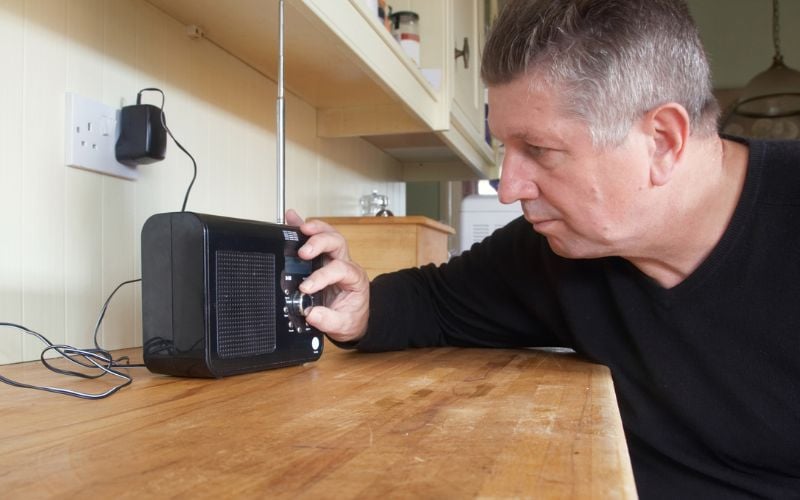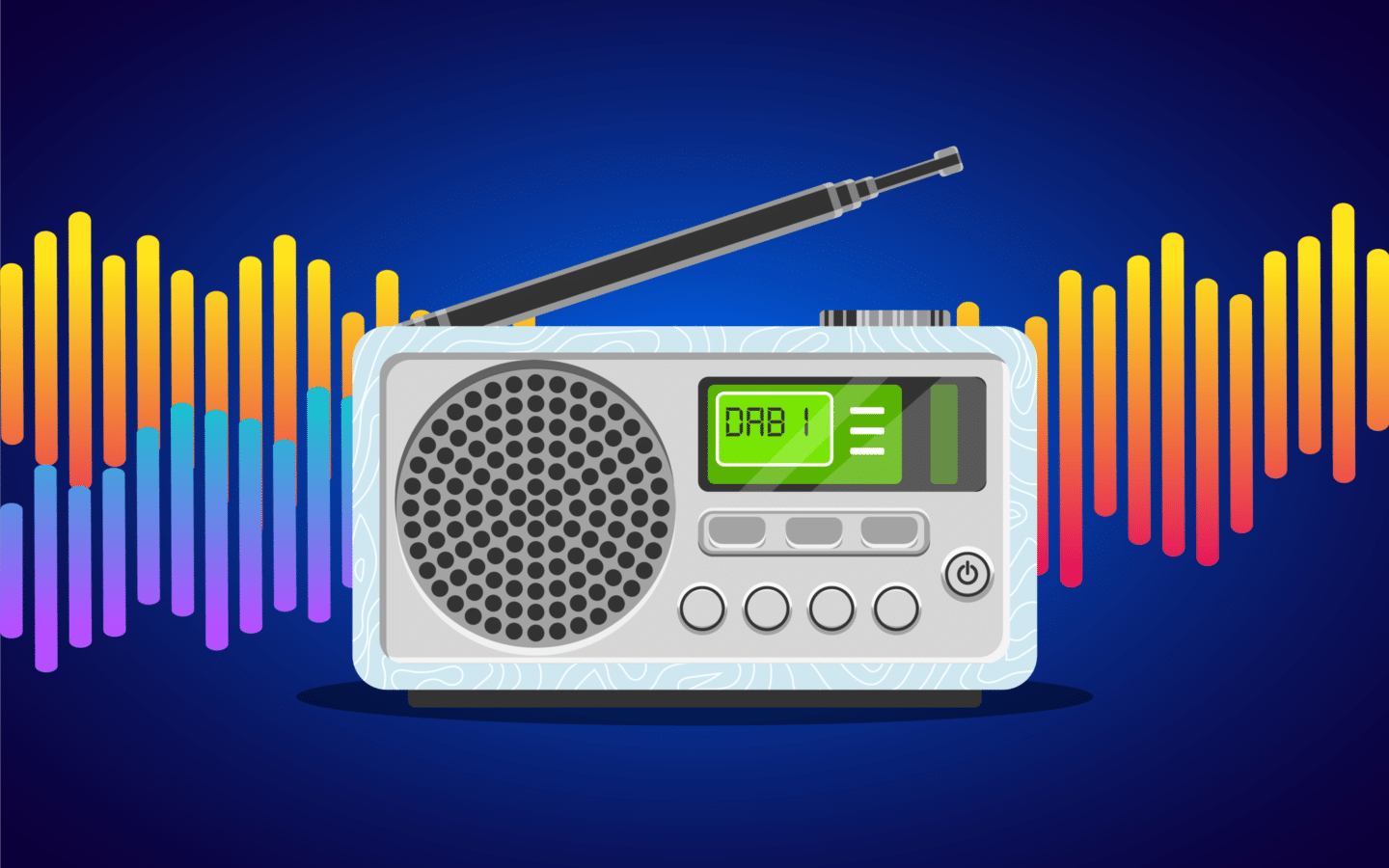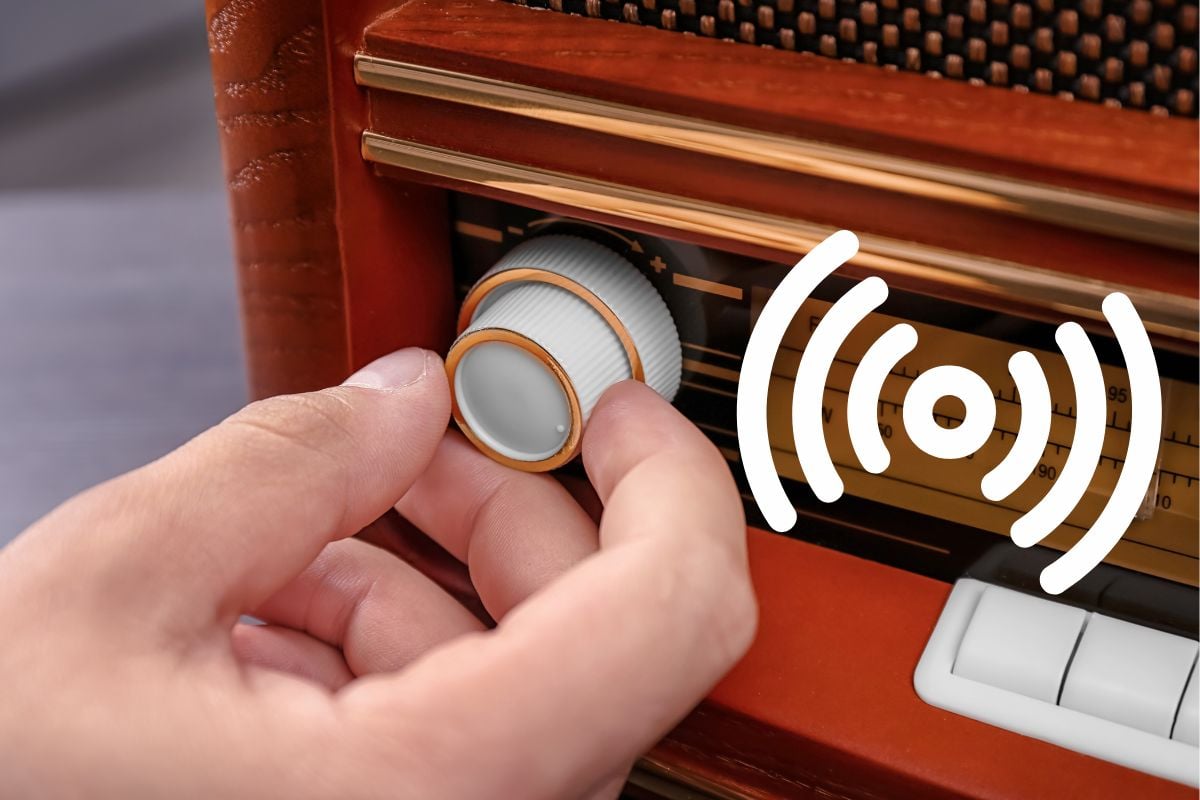One of the many advantages of DAB radio is the vastly superior audio quality over traditional analogue broadcasts, but did you know that the quality can be even better if you optimize your antenna?
By choosing the right type of antenna for your specific needs and placing it in the right place and the right way, you’ll instantly get noticeably better audio quality.
In this post, you will learn about antennas, antenna types, where to place antennas, and more.
What role does the antenna play in DAB radio reception?
The antenna is responsible for capturing the DAB signal from the airwaves and delivering it to the radio’s receiver, where it is decoded and converted into audio.

A good antenna (and positioning) can greatly improve DAB radio reception. Here’s how.
● Acquiring the signal: The antenna receives DAB signals from the airwaves. A good quality antenna picks up the signals more effectively and relays them to the radio’s receiver.
● Reduction of interference: A well-positioned antenna can reduce interference from other signals, e.g. B. from other radio stations or Wi-Fi networks, and improve the quality of the DAB signal.
● Overcome obstacles: A properly placed antenna can overcome physical obstacles such as buildings or trees, which could block or reduce the strength of the DAB signal.
● optimization of the signal: By positioning the antenna correctly, you optimize the DAB signal and achieve the best possible reception. For example, placing the antenna near a window or on a roof can provide a better signal than placing it in a basement or other low-lying area.
What Factors Affect DAB Radio Reception?
Several factors can affect DAB radio reception, including the following.
● Distance from transmitter: The strength of the DAB signal decreases with distance from the station, so the further away you are from the station, the weaker the signal becomes.
● Interference from other signals: DAB radio operates on specific frequency bands that may be subject to interference from other signals.
● obstacles: Physical obstacles can block or reduce the strength of the DAB signal, making it more difficult for the radio to receive a clear signal.
● weather conditions: Bad weather such as B. heavy rain or snow can interfere with the DAB signal and cause reception problems.
● Age and quality of the antenna: An old or poor quality antenna may have trouble receiving the DAB signal, resulting in poor reception.
● location of the antenna: The position of the antenna can also affect DAB radio reception. An antenna located in a basement or other low-lying area may have trouble receiving the signal. An antenna near a window or on a roof may receive signals more effectively.
● age and quality of the radio: Older or inferior DAB radios may not have the sensitivity to pick up weak signals, which can result in poor reception.
What are the different types of DAB antennas available?
There are several DAB antennas available, each with unique characteristics and capabilities. Some of the most common types of DAB antennas for better DAB radio reception are as follows.
- indoor antennas: Indoor antennas go inside a building and are usually small and compact. They can be attached to the back of a DAB radio or mounted on a wall. Some indoor antennas come with a magnetic base, making them easy to move and position.
- outdoor antennas: Outdoor antennas are designed for use outside of buildings and can provide better reception compared to indoor antennas. They are usually larger and more powerful than indoor antennas and are designed to be mounted on a roof or other elevated location.
- loop antennas: Loop antennas are indoor antennas consisting of a loop of wire connected to DAB radio. They can be positioned vertically or horizontally to optimize reception.
- roof antennas: Roof antennas mounted on the roof of a building can provide better reception compared to indoor antennas. They are usually more powerful than indoor antennas and should be mounted in a specific direction to optimize reception.
- array antennas: Array antennas can receive multiple DAB signals from different broadcasters. They are typically installed in areas where multiple transmitters are close together and can provide better reception compared to other antennas.
What is the best position for a DAB antenna?

The best position for a DAB antenna depends on several factors, including transmitter location, physical obstacles, and antenna type.
The optimal position for a DAB antenna is high and clear. Install your DAB radio as high as possible and in a precise location to minimize the effects of physical obstacles and reduce interference from other signals.
Install the antenna directly towards the DAB broadcaster to improve the signal strength.
Place your antenna away from other sources of interference such as WiFi routers, mobile phones and other radio stations as these can affect the quality of the DAB signal.
For indoor antennas, it is best to position the antenna near a window or wall facing the transmitter.
Mount outdoor antennas on a roof facing the transmitter.
It is also important to consider the antenna used. Some antennas, such as B. loop antennas can be positioned vertically or horizontally to optimize reception.
Others, such as Antenna arrays, such as array antennas, pick up multiple signals from multiple transmitters and may require a different positioning strategy.
Can I use TV antennas for DAB radio?
TV aerials are ineffective for receiving DAB signals. This is because DAB operates in a different frequency range, around 200MHz, compared to TVs, which operate in the 400-800MHz range.
Also, DAB signals are vertically polarized while most TV channels are horizontally polarized, which reduces signal strength.
Finally, not all DAB stations are close to TV stations and pointing the antenna in the wrong direction can result in poor reception.
A more reliable solution is to use a suitable DAB dipole antenna, which you can mount in your attic away from metal objects that might interfere with reception.
This antenna should be mounted vertically and will receive signals from all directions, eliminating the need for pointing.
It can be connected to the receiver using a standard TV antenna cable, but it’s best to use a good quality, low-loss cable.
It is not recommended to connect the cable to a feeder to the TV antenna, as this will negatively affect both signals.
Combiner units or diplexers can combine or split signals, but twisting the copper wires together is not advisable.
Final Thoughts
DAB antennas are an incredibly important component in receiving digital audio broadcast signals and can improve DAB radio reception.
Investing in a quality DAB antenna will ensure clear and uninterrupted reception of your favorite radio stations, and proper installation will enhance your listening experience even further.

